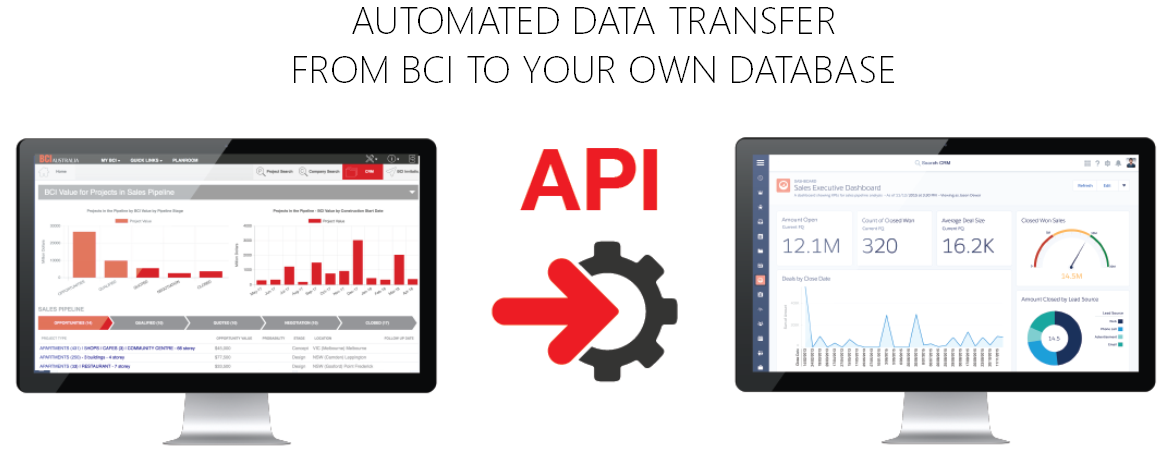The changing role of IT departments
Historically the CRM software selection process has been owned and driven by IT departments facilitated by input from functional leads within the business – however, this is rarely the case any longer! In fact, CRM has been one of the key enablers for cloud computing over recent years and with it, it has brought a changed paradigm where functional leads within sales, marketing and customer service are making independent decisions on what software systems they want to use to support their operational requirements – often only involving IT in part or not at all.
This shift in how businesses select and procure CRM software can largely be attributed to the nature of cloud delivery (SaaS) which often bypasses the need for a Capex approval process and instead allows for subscription costs – and to some extend implementation costs – to be accounted for as operational expenses. We have previously discussed the business benefits of embracing the cloud delivery model (link to previous post here) as well as the impact it has on the day-to-day life of the IT organisation. It emphasises the need for IT to adopt a facilitating role where they work closely with the business to ensure that proper planning, evaluation, and selection processes are still being enforced and that more technical aspects of the software selection around technology stack choice and compatibility, system integration, mobility, and security is evaluated in full and is not set aside in the pursuit of features and functions by Sales, Marketing, and Customer Service.
The planning process
Begin with a business case
 Evaluating CRM software without first identifying the critical business drivers that will directly impact business performance is a recipe for a failed CRM effort. CRM software supports a company’s customer management strategy. It’s important to recognise that CRM is business strategy, supported by CRM software, designed to grow mutually beneficial customer relationships. To be successful with CRM software, you need to have a clear CRM strategy, with measurable objectives, that CRM software can then enable via data management, process automation, information reporting and more.
Evaluating CRM software without first identifying the critical business drivers that will directly impact business performance is a recipe for a failed CRM effort. CRM software supports a company’s customer management strategy. It’s important to recognise that CRM is business strategy, supported by CRM software, designed to grow mutually beneficial customer relationships. To be successful with CRM software, you need to have a clear CRM strategy, with measurable objectives, that CRM software can then enable via data management, process automation, information reporting and more.
Don’t make the mistake of beginning a CRM software selection before you have a CRM strategy. It’s a CRM selection best practice to create a business case that outlines the CRM strategy and identifies specific and measurable objectives that CRM software should facilitate. For example, objectives may include improving marketing campaigns by increasing lead acquisition conversions by 5 percent, or improving sales effectiveness by increasing sales win rates by 2 percent, or increasing customer retention by improving first case resolutions or customer satisfaction by 5 percent. There are many possible goals. The critical success factor is to document these goals so that you can then identify the best CRM software system to achieve your objectives.
Ensure executive sponsorship
Obtaining internal sponsorship is the most important early step a company can take if it decides to move forward with a CRM solution. Internal sponsorship usually comes from the C-suite, however, is often delegated down to become the responsibility of the vice president of sales or marketing. If your CRM solution is intended to improve revenues, it’s critical that the executive sponsor have revenue accountability, and preferably own the P&L. An executive sponsor should start by asking good questions such as: How will CRM impact the lives of employees? How will CRM impact productivity? or how will the business be impacted by not doing a further evaluation of CRM?
Don’t just select a project team but an A-team
Organise a project team for the CRM evaluation process. The project team should include a dedicated Project Manager, an employee from each of the affected departments or locations, and representation from IT. Depending upon the size of your company and scope of your project, you may also create a Steering Committee. The goal of the project team will be to represent all stakeholders and to understand, document and prioritize stakeholder needs so that those needs can be objectively compared to different CRM software systems. There’s an old saying that if you need something done, give it to a busy person. This applies to finding the right staff to participate on the project team. Project team participants should have intimate knowledge of business processes, be respected by their peers and be capable of acting as change agents. What you’ll inevitably find is that the people with the least time are exactly the people you need to join the CRM selection project team. Make sure you get the right people on the team, and not necessarily the people with available time on their hands.
Establish key business objectives and functional requirements
 Developing a clear-cut set of business goals is an integral component of any CRM software selection. The project team must work to understand how departments currently generate, access and store data, and determine the strengths and weaknesses of each approach. They must also interview departments such as sales, marketing and service, in order to document current business processes and procedures in place and on this basis request them to produce a compilation of mandatory requirements and a wish-list for the use of CRM software to automate and facilitate these processes. You should have a check-list of measurable, weighted and prioritised requirements for your software selection which will also act as a benchmark for follow-up analysis of the software’s success and return on investment (ROI).
Developing a clear-cut set of business goals is an integral component of any CRM software selection. The project team must work to understand how departments currently generate, access and store data, and determine the strengths and weaknesses of each approach. They must also interview departments such as sales, marketing and service, in order to document current business processes and procedures in place and on this basis request them to produce a compilation of mandatory requirements and a wish-list for the use of CRM software to automate and facilitate these processes. You should have a check-list of measurable, weighted and prioritised requirements for your software selection which will also act as a benchmark for follow-up analysis of the software’s success and return on investment (ROI).
Identify business process improvement opportunities
The team should thoroughly review existing business processes and keep an open mind to process re-engineering. Focus on not repeating flawed or inefficient processes in the new CRM solution simply because that process is currently in place. Use process mapping software such as Visio or white boarding of both existing and new workflows to identify bottlenecks or process improvement opportunities. This is a chance to start with fresh ideas and processes to improve business.
Establish the budget
Once the CRM project goals have been established and the functional requirements defined and prioritised a budget can be put in place. Reviews of multiple CRM applications have shown that on average the up-front costs make up only a small portion of the overall investment. Cloud CRM systems reduce or remove upfront investments in application software and hardware such as servers, but may or may not cost less over a five year expected life. You’ll need to perform a calculation analysis to determine your actual TCO, and be sure to include either the SaaS subscription or on-premise license along with implementation services (installation, data conversion, configuration, training, etc.), system integration, software customisation and annual maintenance (for on-premise solutions). If you do the math, you’ll generally find that CRM systems with comparable upfront pricing result in very different TCO over their expected lives.
Defining evaluation criteria
Price & TCO
Of course, knowing your budget is an important component of any IT purchasing decision. However, price is only one factor, and is often more of a constraint than a score. Do not only consider the upfront costs, but also research the long-term costs—and benefits—a CRM solution will deliver. Determine what is included in the price, and as importantly what’s not, is critical to understanding your true TCO.
Features & functions
It’s important to remember that CRM software is a mature market with approximately 70% feature set overlap among most vendors. It is the final 30%, which includes emerging evaluation criteria, that provides differentiation and ultimately the best solution fit for any particular business. Organisations are continuing to evaluate features and functions as before, however, they need to make a conscious effort to expand the evaluation process to include emerging evaluation criteria like deployment model, business agility, business process automation, globalisation, etc. in choosing the best fit solution.
System integration (Best of Class vs. Native or embedded)
System integration has always been an important evaluation criteria as part of the CRM software selection process, but it is even more so today. A key reason for this is the increased requirement to be able to present a 360 degree view of the customer within CRM. Without extensive back office integration it is simply not possible to include data such as customer credit limit, credit availability, inventory stock levels, shipping status or a view of the customer’s purchase history. This ultimately injects a dilemma into the CRM software selection process: On one hand, Best of Class software solutions like Microsoft Dynamics CRM and SalesForce.com are offering the most feature-rich and agile solution offering to your business, but at the same time they rely on custom-built system integration to be developed, configured, and maintained, which can be time consuming and costly. On the other hand, native – or embedded solutions – which have been purpose-built for a back office application or ERP will provide real-time and direct access to such data within CRM, but will likely lack the scalability and flexibility of the Best of Class solutions. Ultimately the best fit solution will have to be selected based on the long term objectives of the company’s CRM strategy and, hence, will have to factor in the future need for deployment model, business agility, process automation, globalisation, etc. as discussed in the following.
Deployment model (On-premise vs. cloud / SaaS)
Cloud CRM is experiencing tremendous growth and is expected to overtake on-premise CRM later this year or early next year. SaaS or cloud delivery can achieve benefits such as the elimination or reduction of up front capital expenditures, accelerated time to value, outsourcing of a non-core competency, on-demand scalability, predictable IT expenditures and even enhanced business agility. However, with its recurring subscription payment, whether or not it will achieve a lower total cost of ownership (TCO) over the life of the application is something you’ll have to calculate. The required investment may be lower or higher for either deployment model based upon various unique customer criterion and therefore has to be individually calculated to determine which deployment model actually achieves lower TCO. But remember, that besides the TCO consideration for the life of the CRM software acquisition, evaluation criteria relating to the service accessibility across all types of devices and form factors may prove to be more important to the overall value assessment of the solution.
Business agility (Scalability and flexibility)
Business Agility includes the capability of the application software to quickly adapt to changing business conditions and processes without software customisation and vendor engagement. Many new business systems are incorporating richer user interfaces and easier configuration options to enable the customer to do most of the changes themselves. Since many systems are on par with respect to features and functions, self-configuration is heavily being considered within the evaluation process. For more extensive changes to the CRM software, vendors are delivering visual, drag-and-drop PaaS toolkits which permit customers to modify the software objects, forms, fields and navigation without changing the source code or affecting support and upgrade capabilities. Evaluating business system agility as part of your software selection process is probably the single most important aspect of you decision-making, so please consider this carefully!
Business process automation
Business process automation is now a unifying link that can reside inside or outside the application software in which you are evaluating. The business process engines contained within the CRM software often allows integration and unification of disparate systems. This can be a method that software vendors use to combine functionalities and collaborate among different applications like office productivity tools for email integration, document sharing and storage, IM, etc. These new business process engines allow for decision making capabilities, improved business intelligence (BI) visibility, internal and external collaboration, and the abilities to define workflows, data flows, creation of approval triggers, and support of application changes to be tested without disruption to current processes through data modelling. Business processes may be extensible and can facilitate sharing information upstream and downstream to suppliers and partners.
Other key selection criteria
- Vertical market expertise – Vertical market expertise is now often given a higher priority than before. Organisations now realise that software is pretty much equivalent in functionality and use the expertise of the vendor as a differentiation point to select the best partner. Organisations sometimes mistakenly compare a vertical market solution to the horizontal applications which are often more general in nature. The ability for a CRM vendor to distinguish itself with an industry specific solution may prove very helpful to the CRM buyer as it should demonstrate that the CRM vendor truly understands their business and consequently their functionality, automation, reporting and support requirements.
- Globalisation – Multiple location or global companies must consider global software feature-sets (multi-currency, multiple languages, time-zone synchronization, compliance, etc.) and real-time data sharing issues to continue to support staff and customers effectively.
- Social – In the sales, marketing and customer service departments, marketing is being forced to monitor, communicate and engage in social commerce business with several hundred public social networks. Customer service has to respond to tweets and Facebook and LinkedIn discussions, as new service channels and sales are now using social media as a source of new leads and intelligence on prospects.
- Mobility – Smartphones, tablets and mobile apps are forcing change at an even faster rate than social networks. Connections to the Internet via smartphones will exceed PC users by the end of 2014 and smartphones have already overtaken PCs as the most common tool for accessing social networks in most countries. Bring your own device (BYOD) policies are springing up around the globe as IT departments are forced to support a proliferation of devices. It is tablets, however, that are causing the most disruption as sales departments and board directors purchase them and then demand support.
- Big data – The marketing department has been most impacted by the explosion in customer information available to businesses during the past five years. Predictive analytic models for churn analysis, product and service recommendations direct to the customer, and/or sales prompts for salespeople are all becoming more sophisticated. Thus, the data is available and the tools are emerging, but the problem is the lack of skills and resources to use the tools.
- Internet of things – As cars, buildings, bodies and chairs are connected to the Internet and as the price of sensors and communications drops down toward $1, the automotive, construction, healthcare and hospitality industries, among many others, will be transformed. At the forefront of this shift will be sales, marketing and customer service departments in promoting, selling and supporting the new services.
Vendor Selection
Select for the long term but implement for the near term
In summary it must be said that there is no short-cut through the CRM software selection process – only a dedicated and whole-hearted planning, evaluation, and selection process will ensure a long term success of your investment. It’s also important to note that the most successful adopters planned complete enterprise CRM solutions but sequenced their projects into manageable phases and delivered incremental and measurable progress over time. Most companies struggle with the amount of change management that comes with new CRM software as invariably processes and culture evolve in conjunction with the technology. Phasing the roll-out by CRM function, business unit, or geographic location provides the implementation team increased focus, manageability and predictability. The key to a successful phased project is to thoroughly understand the larger scope and to link the design and configuration decisions for each phase into the grand strategy. So don’t mortgage your future and settle for a system that has near-term fit but does not provide a long term solution.




